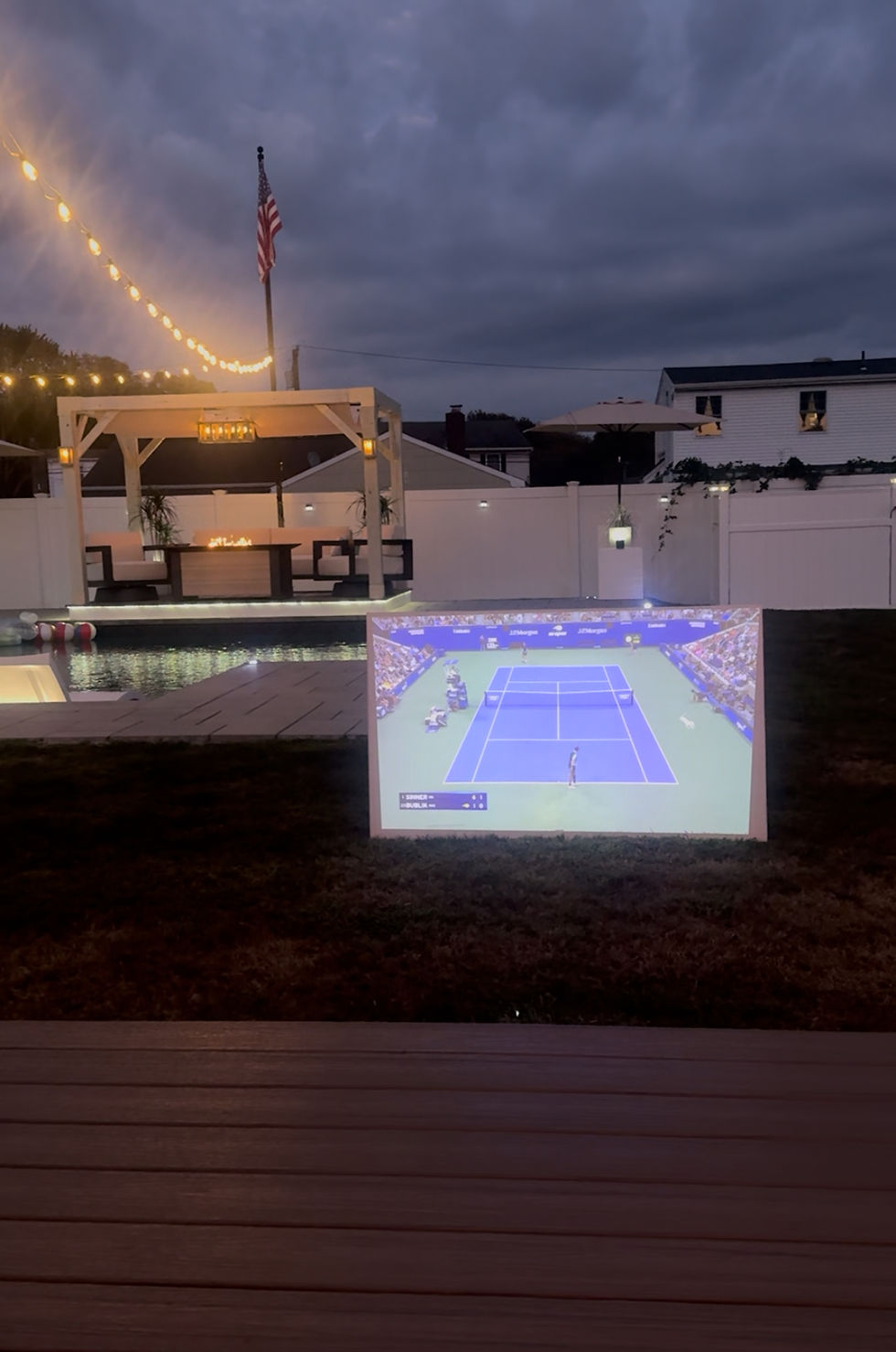DIY Concrete Countertops: A Step-By-Step Guide
- Mark Cisek
- Apr 22
- 6 min read
Updated: Aug 29

Skill Level: Intermediate
Overview:
Building your own concrete countertops may seem intimidating at first, but it's becoming increasingly popular as more people realize they can take on the project themselves. There are two main methods to choose from: the Cast-in-Place technique and the Pre-Cast method. Both approaches can yield great results, though I personally opted for the Pre-Cast method. If you're curious about the differences between the two, this article will break them down for you. With that in mind, let’s dive in and get started.
Choosing Your Materials:
Selecting the right materials for your countertop project is crucial to ensuring its durability and overall quality. Especially when building a concrete countertop for an outdoor kitchen, like I did, you want to make sure it can withstand the elements.
Companies like Concrete Countertop Solutions specialize in simplifying the DIY concrete countertop process, ultimately helping you achieve a successful project. They offer top-quality products, from premium concrete and forms to sealers that protect your countertops, along with all the tools needed to ensure long-lasting results.
Materials List: Concrete Countertop Solutions Coupon Code (CISEKDESIGNS)
Step 1: Building Your Form
Since we are using the Pre-Cast method for this countertop project, the first step is to build a solid form. For this, you will need ¾-inch melamine board cut to the exact dimensions of your countertop.
For this specific project, the dimensions were 77 inches × 22 inches × 1.5 inches, and the form was assembled using 1 1/4 inch exterior screws.

Step 2: Prepping Your Form
Preparing your form is a crucial step in achieving a high-quality finished project. Skipping this step will only create more work for you later.
The first thing you need to do is caulk all the inside edges of your form. You can use either standard caulk or silicone for this step. This prevents sharp edges in your finished countertop and allows you to round off the edges as much as you'd like.
After letting the caulk dry for a couple of hours, clean the inside of your form with rubbing alcohol. This helps remove dust and debris while also preventing the concrete from sticking to the form. If you want to go a step further, you can apply a thin layer of a non-stick product as an additional release agent. Just be sure it is evenly distributed and not pooling.
Step 3: Planning The Concrete Pour
Although pouring concrete isn’t overly difficult, there are several key steps to ensure a successful outcome. For this process, I like to break it up into three different categories-Planning, The Pour, and The Finish.
First, choosing the right concrete mix is essential—not all mixes are suitable for countertops. Among the available options, Concrete Countertop Solutions offers a top-rated mix that simplifies the process.
Second, preparation is crucial. Have multiple buckets ready, along with a cement mixer attachment for your drill, a rubber mallet, and a hose nearby. Ensure you have the correct number of concrete bags opened and ready to go. Additionally, keep your concrete mesh next to the form, as it needs to be placed halfway through the pour. Delays caused by unopened bags or missing supplies will only add unnecessary stress to the process.
Proper planning is key to a smooth and efficient pour.
Step 4: The Pour
After all your preparation, it’s finally time for the concrete pour. While having an extra set of hands can be helpful, if you’re working alone—as I was—your preparation will set you up for success.
Pour and mix the concrete one bucket at a time, following the specific instructions for your chosen mix. These details may vary depending on the type of concrete you’re using. In my case, my countertop required around 200 pounds of concrete, so I had five buckets ready, each weighing 40 pounds.
After mixing and pouring the first three buckets into the form, I used a trowel to evenly spread the concrete and push it into the corners. This step helped prepare the surface for the mesh, which I then placed into the form. After that, I mixed and poured the remaining buckets of concrete on top of the mesh.
Step 5: Finishing Off the Pour
After all the concrete is poured into the form, make sure to push it thoroughly into the corners and edges to eliminate any gaps. Then, using a rubber mallet, tap around the edges and underneath the form to release air bubbles from the concrete. I prefer to do this before screeding off any excess concrete, as some settling will occur as the air bubbles escape.
After reducing air bubbles and filling any gaps, screed off the excess concrete using either a specialized tool or a straight 2x4. To do this, run the straight edge across both sides of the form to level the concrete. Once the excess is removed, tap all sides and the bottom of the form again to release any remaining air bubbles—this step can take 20–30 minutes.
Finally, use a float or trowel to smooth the surface. It doesn’t need to be perfect, as the bottom of the form will become the top of your countertop.

Step 6: Remove and Flip Your Countertop
After allowing the concrete to dry for the appropriate amount of time, you can begin removing the form. Start by unscrewing and carefully removing the sides. Some sections may stick slightly to the concrete, so proceed with caution. Once the sides are off, flip the countertop over to remove the bottom, which will serve as the top surface. Ensure you have multiple people to assist with this step.
Step 7: Wet Sand and Slurry (Only if needed)
When using the form method to make a concrete countertop, one major advantage is that the top comes out smooth—provided the proper prep work is done beforehand. However, as with any DIY project, perfection isn’t always guaranteed. Sometimes, air bubbles can create small holes in the countertop surface or along the edges, requiring a slurry to fill them.

You can make your own slurry, but the quickest and most effective option is to use a pre-formulated concrete slurry like Z Counter-Patch, designed for this type of project. For smaller holes, mix the slurry with a small amount of water until you reach the desired consistency. For larger voids, you can make the mixture slightly thicker.
Wearing rubber or latex gloves, rub the slurry into the voids and allow it to cure. Wipe away any excess with a damp sponge. Once cured, you can sand the area using regular sandpaper. If the entire countertop needs smoothing, consider wet sanding with concrete sanding pads for a more refined finish.

Step 8: Sealing
After your new countertop is securely in place, you’re not quite finished yet. It’s time to protect your investment by sealing it to ensure it can withstand the outdoor elements—especially the unpredictable Northeast weather.
Of all the concrete sealers I tried, Z SiAcryl 14 was the best choice for my outdoor kitchen because it preserved the natural look of my countertops without a high-gloss finish. Using a roller, I applied four coats of sealer, rolling in different directions each time. This technique helps fill any voids, providing a strong layer of protection against both the weather and everyday spills.
Once it’s fully dry, you can finally enjoy the results of your hard work and start making the most of your new kitchen countertops.

Final Thoughts:
The nice thing about concrete countertops is that they are extremely durable for outdoor use. However, this doesn’t mean you can skip maintenance—keeping up with sealing is important to preserve and protect them.
Z SiAcryl 14 can be applied every one to two years, and the best part is that there's no prep work required for resealing, aside from making sure your countertops are clean.
Preparation is everything. Choosing high-quality materials—like those from Concrete Countertop Solutions—ensures durability and makes each step easier. Even if small imperfections pop up, a quick slurry and some sanding will take care of them.
In the end, this project is all about patience and attention to detail. Take your time, trust the process, and you’ll end up with a custom concrete countertop that looks amazing and lasts for years.
Partnership with Concrete Countertop Solutions






















Comments